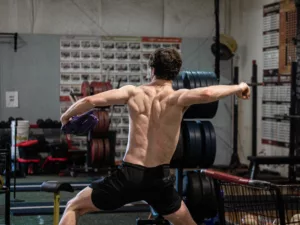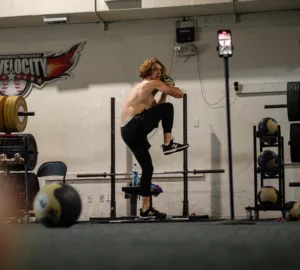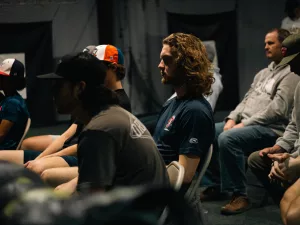The only way to improve pitching velocity

I painstakingly put this article together to help you save a ton of time searching for ways to improve pitching velocity and to also entertain you in the process. Do you know how many people waste thousands of hours searching for the answer to improving their pitching velocity? Enough to make Google really wealthy!
Who needs 100’s of ways to increase pitching velocity when it only takes ONE. Most of the ways and gimmicks out there just distract you from understanding the ONLY way to improve pitching velocity. If you ONLY focus and train in this one way, then you may just have the chance of becoming a high velocity pitcher.
It is something that is a complete game changer. It is something that you always knew was the answer, but never was man enough to accept. Yes, when I give you the answer to improving pitching velocity you are not going to like it. It may even upset you enough to the point that you stop reading this article and go back to your comfort zone of running poles and long tossing. I actually hope it does have this effect on you because the truth is everyone can be a high velocity pitcher but only a small few are willing to accept reality and make it happen.
This all may sound like a lot of hype and a bit ridiculous, but if you want to develop your pitching velocity then stick around for the finish.
OK, that was a lot of nonsense! The point is don’t reinvent the wheel, just ask for help from those mature, older wheel makers like me, who are willing to help you build your wheels so you can spend your career spinning them instead of building them. Anyways, you should be honored because I do build some pretty awesome wheels!
The Answer to Improve Pitching Speed, I mean Velocity.
 Now that the formalities and hype is over, lets dive into the details on how to properly train to increase your pitching velocity. The method is very simple. To develop your velocity, you have to train for speed. It is the only way to improve pitching velocity. Incase you are curious, velocity is speed and speed is velocity. I am not joking. You can look it up online.
Now that the formalities and hype is over, lets dive into the details on how to properly train to increase your pitching velocity. The method is very simple. To develop your velocity, you have to train for speed. It is the only way to improve pitching velocity. Incase you are curious, velocity is speed and speed is velocity. I am not joking. You can look it up online.
Now you may be asking yourself, "what does this have to do with increasing pitching velocity"? The answer is, everything. If you speed up your body's movements through the entire pitching motion, and when I say, "entire pitching motion," I would like to clarify that my intent is the use of the entire kinetic chain to produce maximum velocity. A player's throwing speed is determined by how well they can use the kinetic chain to enhance their pitching motion. Merely, speeding up your arm action will only result in an over use injury occurring in the throwing arm. On top of that, studies have shown that more than 80% of an elite pitcher's velocity is delivered to the arm through the trunk.
On that note, let me show you how you can apply the principle of training for speed in your training so you can use your entire kinetic chain to develop more energy and power your ball velocity.
The Seed of Pitching Speed
How an athlete generates speed is the same in all athletes, in all sports, through ground force reaction. There is no other way to develop speed. God created it this way and there is no changing or improving on what He created. But that does not mean we cannot maximize this law of motion that was first discovered by Isaac Newton. Once an athlete generates this speed or energy is created by the athlete through their interaction with the ground, then we have something we can work with. For example, sprinters utilize this energy to continue the process of moving forward. Fighters use this to manipulate their opponent and baseball players use these forces to apply more force to the ball and thereby increase pitching velocity.
When it come to baseball players, players can enhance these ground reaction forces by ensuring the have optimally positioned their entire body to maximize each aspect of the throwing motion. Because the more ground reaction forces baseball players can develop, the more ground reaction forces they have to work with. This means the better more explosive elite pitchers can generate more ground reaction forces and therefore more speed.
The Holy Grail of Pitching Velocity
Now you may be wondering, since we tout ourselves as being a scientific-evidence based program, where is our proof? In the following study, published in the Journal of Strength and Conditioning Research and submitted by John A. Guido Jr. and Sherry L. Werner, shows the relationship between ground reaction forces and pitching velocity.
Guido, JA Jr and Werner, SL. Lower-extremity ground reaction forces in collegiate baseball pitchers. J Strength Cond Res 26(7): 1782–1785, 2012—The purpose of this study was to investigate ground reaction forces (GRF) in collegiate baseball pitchers and their relationship to pitching mechanics. Fourteen healthy collegiate baseball pitchers participated in this study. High-speed video and force plate data were collected for fastballs from each pitcher. The average ball speed was 35 ± 3 m/sec (78 ± 7 mph). Peak GRFs of 245 ± 20% body weight (BW) were generated in an anterior or braking direction to control descent. Horizontal GRFs tended to occur in a laterally directed fashion, reaching a peak of 45 ± 63% BW. The maximum vertical GRF averaged 202 ± 43% BW approximately 45 milliseconds after stride foot contact. A correlation between braking force and ball velocity was evident. Because of the downward inclination and rotation of the pitching motion, in addition to volume, shear forces may occur in the musculoskeletal tissues of the stride limb leading to many of the lower-extremity injuries seen in this athletic population.
The generation of higher ground reaction forces during the pitching motion is related to the production of greater lower body power, which is a key factor in developing higher throwing velocity. The stride leg generates higher vertical and medial-lateral ground reaction forces than the pivot leg during the pitching motion, and this indicates that the stride leg is responsible for generating the majority of the lower body power.
When a pitcher generates higher ground reaction forces with the stride leg, it means that they are able to produce a greater amount of energy that can be transferred through the body and eventually into the baseball. This is because the ground reaction forces act as a source of energy for the body, and the body can use this energy to produce more powerful movements.
By increasing the amount of energy that can be transferred through the body, a pitcher can significantly increase pitching velocity. This is why developing lower body power is crucial for pitchers who want to improve their performance.
Therefore, the findings of this study suggest that increasing the ground reaction forces generated or directed toward the plate, especially with the stride leg, may result in higher throwing velocity in collegiate baseball pitchers.
Now it is time to connect the pieces so you can throw a professional fastball with less stress.
To connect stride speed to more velocity, requires hip to shoulder separation. Hip to shoulder separation is the defining moment of front foot strike. aka. When your lift leg lands. The National Pitching Association (NPA) in 2005-2006 proved in their Velocity Study that:
“The results from our study indicate that just about 80% of a pitcher’s real velocity comes from the torque of hip and shoulder
separation”
Read entire case study here: http://www.nationalpitching.ne…..UV_NPA.pdf
Through hundreds of 3D motion capture analysis of MLB pitchers, the NPA discovered the average hip to shoulder separation of a Major League pitcher is 40-60 degrees. This is the difference between the vector of the left to right hip to the vector of the left to right shoulder. put it all together and you get the term "torque." Torque is the presence of elasticity. In scientific terms, we have a force multiplier occurring. So when a pitcher uses the right techniques, the pitcher can use the GRF to generate torque with hip to shoulder separation. Which enhances the force applied through the upper body and eventually applies more power to the ball. This is what the hardest throwers in the game of tapped into.
3X Pitching velocity camp to Improve Pitching Velocity

Now that I have shown you how important ground reaction forces are to allow players to maximize ball velocity and how they determine pitching velocity. Let's talk about how you can train with a strong emphasis on maximizing your production of ground forces and optimize your hip to shoulder separation.
The 3X pitching velocity program comes with everything you need to know about developing elite bio-mechanics, more explosiveness, which has a high correlation to the amount of ground reaction forces a baseball player can achieve, and a longer stride length. All of which allow baseball players to achieve maximum force toward the release point.
If you are looking to increase pitching velocity, hone your arm position, and strengthen your entire body to handle the rigors of pitching at an elite level. Then the 3X pitching velocity camp is the place to be! We have helped hundreds of lower velocity pitchers apply the right techniques to their mechanics and seen their velocity jump 5-10 mph within the first 2-weeks of training. Don't hesitate to more velocity until it is too late. click the link below to sign up for our next baseball camp.

Increasing Pitching Velocity From Home
 Can't attend our pitching velocity camp in person? Sign up for our Top Velocity Remote Coaching program. This option allows you to attend our camp virtually or in person when your schedule allows. You get access to everything the 3x pitching velocity camp has to offer and personalized advice on how to set up your customized training program for use in a local gym or at Top Velocity Franchise. Fill out the form today and start your journey to a more powerful pitch today!
Can't attend our pitching velocity camp in person? Sign up for our Top Velocity Remote Coaching program. This option allows you to attend our camp virtually or in person when your schedule allows. You get access to everything the 3x pitching velocity camp has to offer and personalized advice on how to set up your customized training program for use in a local gym or at Top Velocity Franchise. Fill out the form today and start your journey to a more powerful pitch today!





Trackbacks/Pingbacks